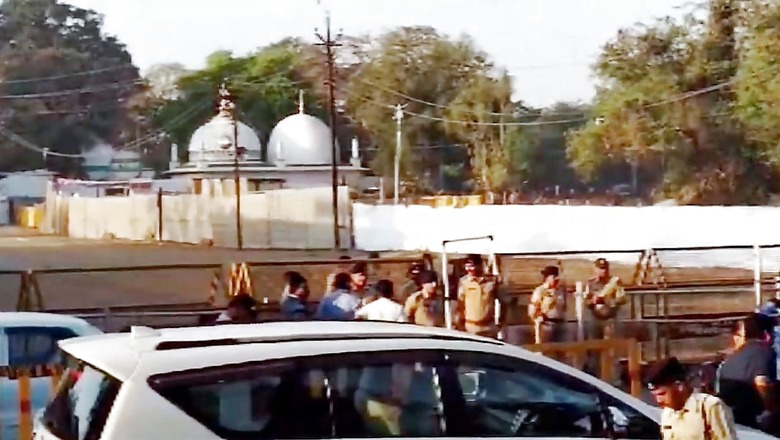
views
There was a time when a BJP-led government in Madhya Pradesh had ensured a Friday (Juma) prayer at a disputed site without any violence and earned the prestigious Indira Gandhi Award for Communal Riots Prevention and Harmony from the Manmohan Singh government at the Centre.
On February 3, 2006, when Shivraj Singh Chouhan was barely six months into the office of the chief minister, Madhya Pradesh, Friday prayers had coincided with Basant Panchami at Bhojshala in Dhar district of the state. Muslims claim Bhojshala to be a 16th century mosque built by Sufi saint Kamaal Maula while Hindus consider it to be 11th century temple built by legendary king Bhoj.
In a new book authored by senior IPS officer Shailendra Srivastava, titled Shackle the Storm (Rupa Publication), the distinguished officer, who was then IG, Indore Range, has given a graphic account of how he had prevailed upon hawkish Muslim youths to restrict the number of those offering prayers to 13. The act helped the local administration to tide over the crisis when over 20,000 Hindu hardliners gathered inside the complex to “prevent” namaz.
Srivastava says Chauhan had personally monitored the situation throughout the day and instructed him to execute the Archaeological Survey of India’s order to allow both Saraswati Puja and Namaz on the same day at Bhojshala. The centre was then ruled by the Congress-led UPA. The Manmohan Singh government was so pleased with Chauhan that it had conferred a prestigious Indira Gandhi Award for Communal Riots Prevention and Harmony for the year 2006 when he successfully quelled communal disturbance in Dhar.
The ASI order had entailed that the Hindus would have access from sunrise to 12:30 pm and again from 3:30 pm to sunset. Muslims were allotted juma namaz time between 1 to 3 pm. Srivastava recalled how he and his police force had to get Hindus vacate the premises within half an hour, i.e between 1230 pm and 1 pm, for Muslims to offer namaz and then ask Muslims to leave by 3 pm so that Hindus could return to worship goddess Saraswati till the sunset.
Since dawn, Hindu Jagran Manch mobilised huge crowds to perform a “havan” inside Bhojshala as part of usual Basant Panchami festivities. Vishwa Hindu Parishad, Barjang Dal and RSS were using public address systems to mobilise devotees to participate in a yagna in big numbers. “It was anticipated that over one lakh would gather for havan,” Srivastava remembers how the police force was in a precarious position of maintaining law and order while permitting worship plans of the two communities hostile to one another. “The chief secretary (Rakesh Sahni) called to inform me that the Central government’s instructions should be followed in letter and spirit and that the duty of each police officer was to protect the law and maintain peace and tranquillity.”
Srivastava says a major challenge arose as vibrant rangolis were created with flower petals, rice and Kumkum before an oil painting of goddess Saraswati. “Removing the intricately designed rangolis was an impossible task as puja had to be resumed after namaz. The looming possibility of riots between the two communities appeared inevitable.
Srivastava writes how he, being a follower of Sanatan Dharma, was in a great dilemma as to whether to join Saraswati Puja, put some sandalwood in the havan kund or focus solely on my work. “I chose to invoke the blessings of Goddess Saraswati by clasping my hands in reverence after taking off my belt, cap and shoes and placing them on the ground. I fervently prayed for fortitude to discharge my responsibilities amidst the testing circumstances and safeguard the region from communal discord.”
Srivastava and his team managed to move Hindus out of the monument by first requesting state ministers in the Shivraj Chouhan cabinet to leave the premises because using force in their presence would have posed other problems. Srivastava then used local Muslim clergy to announce that only locals would have the right to perform namaz so that only 50 Muslims could go to Bhojshala roof top to perform namaz without upsetting rangoli. Moreover, as per the Muslim faith, namaz could not have been performed before an oil painting of Goddess Saraswati or symbol of any other religion.
There was another trick employed by Srivastava. “Our saffron-clad police officers started pushing the teeming mob while raising the slogan ‘Jai Shri Ram’. The Hindu devotees failed to understand why the saffron-clad men were pushing them out but somehow the sanctum sanctorum was cleared.
Srivastava was, however, let down by one of his officers who was tasked to escort 50 local Muslims to the rooftop. Srivastava then formed a corridor to escort Dhar’s deputy Qazi and 13 others to the rooftop so that namaz could be held. “By the time azan (Muslim call for prayer) began, the February sun had started descending towards the west. The melodic words of azan filled Bhojshala. Numerous TV channels conducted live telecasts of the event,” Srivastava wrote, recollecting how he and his men too expressed gratitude to God and breathed a sigh of relief.
Dhar Bhojshala had witnessed large-scale violence in 2003 when Basant Panchami had coincided with Friday prayers. According to an order passed by the Archaeological Survey of India in 2003, when Jagmohan was Union culture minister under Atal Bihari Vajpayee, Hindus were granted a right to perform puja on the Basant Panchami day when it coincided with Friday. The Muslims are also permitted to offer namaz between 1 pm and 3 Ppm. Hindu Jagran Manch and other radical Hindu groups wanted a complete ban on Muslims performing namaz inside Bhojshala.
However, local Muslims like Nisar Ahmad and Qazi Waqar Siddiqui had pointed out that since 1935, they have been permitted to perform namaz. The 1935 order was passed by the then diwaan of Dhar Estate.
In July this year, a report submitted by ASI to a division bench in Indore reported that an existing structure at the Bhojshala complex in Madhya Pradesh’s Dhar district was constructed using remains of a temple that existed earlier at the site.
The Madhya Pradesh High Court had in March this year had asked the ASI to undertake a “scientific survey” of the Bhojshala Temple-Kamal Maula Mosque complex.
The author is a Visiting Fellow at the Observer Research Foundation. A well-known political analyst, he has written several books, including ‘24 Akbar Road’ and ‘Sonia: A Biography’. Views expressed in the above piece are personal and solely those of the author. They do not necessarily reflect News18’s views.












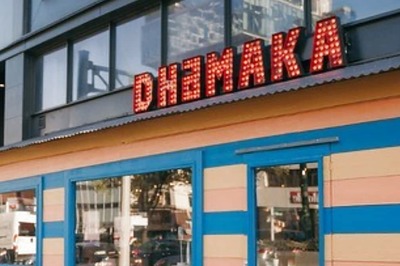
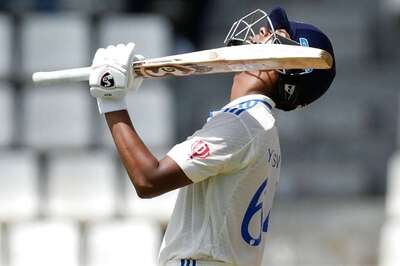



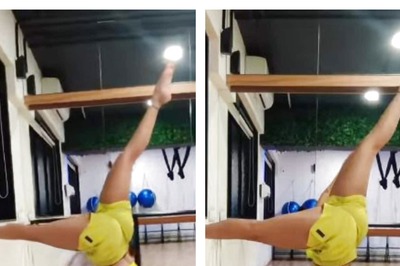

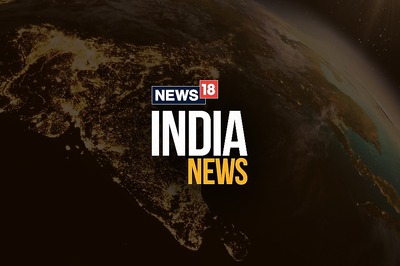
Comments
0 comment